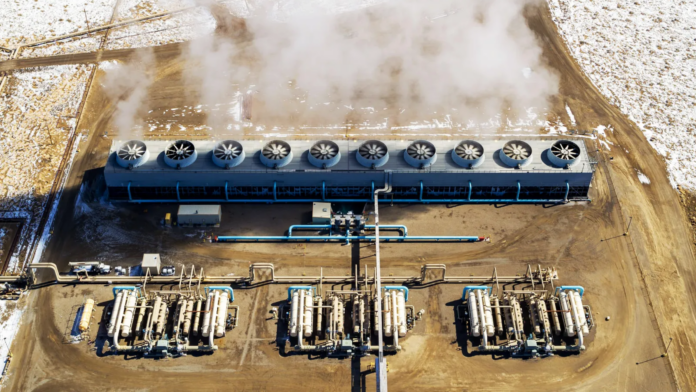In a groundbreaking move towards a greener internet, a novel geothermal power plant has started reshaping how we harness the Earth’s heat. Tucked away in the northern Nevada desert, this pioneering project, known as Project Red, spearheaded by the geothermal startup Fervo, is making waves by supplying power to Google’s data centers.
A Leap Forward in Geothermal Technology
Project Red might be modest in size, producing between 2 and 3 megawatts of power, enough for a few thousand homes, but its implications are massive. This innovative approach to geothermal energy allows for tapping into the Earth’s heat practically anywhere, a game-changer in the world of renewable energy.
The Traditional and The New
Geothermal energy has always had potential, but its utilization has been limited. Traditional geothermal plants are often situated near natural heat sources like hot springs and geysers, where heated water is readily available to generate power. Project Red, however, is forging a new path. This “enhanced” geothermal system (EGS) at the Nevada site is drilling into completely dry rock. By creating an artificial hot spring, where water is pumped down and returns superheated, this method is revolutionizing geothermal power.
Bridging Techniques for Greater Output
Interestingly, Project Red’s success leans heavily on techniques borrowed from the oil and gas industry. Utilizing hydraulic fracturing, or fracking, the project has drilled two wells over 7,000 feet deep, creating a network of cracks in the rock to facilitate the movement of water. This innovative approach has resulted in impressive operational figures, with borehole temperatures reaching 375 degrees Fahrenheit and the potential to produce an estimated 3.5 megawatts of electricity.
From Pilot to Grid
Initially projected to generate 5 megawatts, the project currently produces slightly less, but tweaks in the future may enhance its output. This Nevada venture is not just a pilot project but a fully operational power source, connected to existing turbines and power lines, marking a significant step in renewable energy technology.
Google’s Green Ambitions
Google’s investment in Project Red aligns with its broader goal of powering all data centers with 24/7 green energy. As internet services demand increasingly more power, the need for consistent and clean energy sources has never been more critical. Geothermal energy, with its consistent output, stands as a promising solution to this challenge.
Navigating the Challenges
Despite the excitement, EGS technology isn’t without its hurdles. High initial costs and challenging drilling conditions pose significant barriers. Additionally, the unpredictability of underground conditions and the potential for triggering seismic activity are concerns that need addressing. However, Fervo is committed to mitigating these risks, leveraging geological data and modeling to ensure the effective functioning of their systems.
Looking to the Future
Fervo’s vision doesn’t stop with Project Red. A much larger project in Beaver County, Utah, is set to be operational by 2026, boasting a capacity of 400 megawatts. This project represents not just an increase in scale but also a testament to the potential of EGS technology in transforming the landscape of renewable energy.
Conclusion
Project Red stands as a beacon of hope and innovation in the quest for sustainable energy solutions. By successfully marrying traditional geothermal methods with modern fracking techniques, this project paves the way for a greener, more sustainable future. As we march towards an era where clean energy is not just a necessity but a reality, projects like these are vital in leading the charge.












